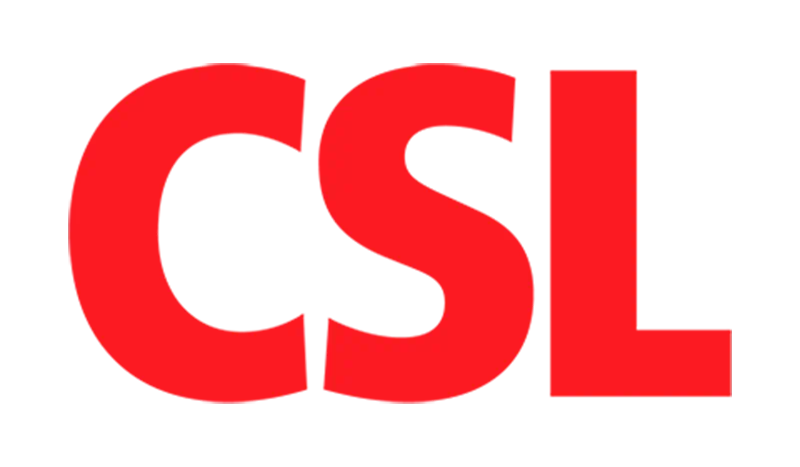- Key milestone achieved in CSL Behring’s PROLONG-7FP clinical development program
- PROLONG-7FP is studying CSL Behring’s recombinant fusion protein linking coagulation factor VIIa with albumin (rVIIa-FP)
- Milestone underscores CSL Behring’s focused scientific expertise and deep commitment to developing and delivering innovative specialty biotherapies for people with serious diseases
CSL Behring announced today that the first patient has been enrolled in its Phase II/III clinical study evaluating the pharmacokinetics (PK), efficacy, and safety of the company’s recombinant fusion protein linking coagulation factor VIIa with albumin (rVIIa-FP) for on-demand treatment in patients with congenital hemophilia A or B who have developed an inhibitor to factor VIII or factor IX replacement therapy. The study will enroll approximately 54 male patients, the first of whom was enrolled in Malaysia.
“CSL Behring has a thorough understanding of the bleeding disorders community, focused scientific expertise and a strong commitment to developing and delivering innovative specialty biotherapies that treat serious medical conditions,” said Dr. Andrew Cuthbertson, Chief Scientific Officer and Director of R&D, CSL Limited. “Our commitment, expertise and understanding helped CSL to develop rVIIa-FP, based on the innovative recombinant albumin fusion technology platform, to treat patients with hemophilia A or B with inhibitors as well as congenital factor VII deficiency.”
About Hemophilia A or B with Inhibitors
Hemophilia is an inherited bleeding disorder characterized by prolonged or spontaneous bleeding, especially into the muscles and joints. The disorder is caused by deficient or defective blood coagulation proteins known as factor VIII (hemophilia A) or IX (hemophilia B). The recommended treatment for these patients is factor replacement therapy. Development of inhibitory antibodies against factor VIII or factor IX is a major complication associated with replacement therapy and may partially or completely prevent the efficacy of factor replacement therapy. The incidence of inhibitors in individuals with hemophilia A is estimated to be up to 33 percent and between one and 6 percent in patients with hemophilia B. The most recent World Federation of Hemophilia (WFH) survey identified more than 4,753 patients with hemophilia A and 248 with hemophilia B who have developed an inhibitor worldwide.1
About rVIIa-FP
Preclinical studies have confirmed that CSL Behring's rVIIa-FP (also known as CSL689) has favorable pharmacokinetic properties compared with the existing recombinant FVIIa product.2 In a phase I study in healthy volunteers, rVIIa-FP showed a good tolerance, and a 3- to 4-fold increase in half-life compared with the commercially available rFVIIa-product (median 8.5h).3
The European Commission granted Orphan Drug Designations for rVIIa-FP for the treatment of patients with hemophilia A or B who have developed an inhibitor as well as the treatment of congenital factor VII deficiency. rVIIa-FP also received Orphan Drug Designation from the U.S. Food and Drug Administration (FDA) for the treatment and prophylaxis of bleeding episodes in patients with congenital hemophilia and inhibitors to coagulation factor VIII or IX. Orphan designation qualifies the sponsor of the product for important benefits such as tax credits for qualified clinical testing and exemption from certain application fees.
For more information about CSL Behring’s recombinant products in development to treat hemophilia, visit http://www.cslbehring.com/products/bleeding-disorders/novel-recombinant-hemophilia-treatments.
About PROLONG-7FP Clinical Development Program
This Phase II/III study in patients with hemophilia A or B who have developed an inhibitor is a part of the PROLONG-7FP clinical development program. This program aims to demonstrate the therapeutic advantages of rVIIa-FP in patients with hemophilia A or hemophilia B who have developed inhibitors as well as in patients with congenital FVII deficiency. A Phase I PK study in patients with congenital FVII deficiency is ongoing.
For more information about the Phase II/III study, please visit clinicaltrials.gov.
About CSL Behring
The people and science of CSL Behring save lives around the world. We develop and deliver innovative specialty biotherapies, driven by our 100-year promise to help people with life-threatening conditions live full lives. With 14,000 employees and operations in 30 countries, CSL applies world-class R&D, high-quality manufacturing and patient-centered management.
CSL Behring therapies are used around the world to treat coagulation disorders including hemophilia and von Willebrand disease, primary immune deficiencies, hereditary angioedema and inherited respiratory disease, and neurological disorders in certain markets. The company’s products are also used in cardiac surgery, organ transplantation, burn treatment and to prevent hemolytic disease of the newborn.
CSL Behring operates one of the world’s largest plasma collection networks, CSL Plasma. CSL Behring is a global biopharmaceutical company and a member of the CSL Group of companies. The parent company, CSL Limited (ASX:CSL), is headquartered in Melbourne, Australia. For more information, visit www.cslbehring.com.
Contact:
Greg Healy
CSL Behring
Office: 610-878-4841
Mobile: 610-906-4564
Greg.Healy@CSLBehring.com
1 World Federation of Hemophilia; Report on the Annual Global Survey 2013, 2014
2 Zollner S et al., J Thromb Haemost 2014; 12: 220–8.
3 Golor G et al., J Thromb Haemost 2013; 11: 1977-85


